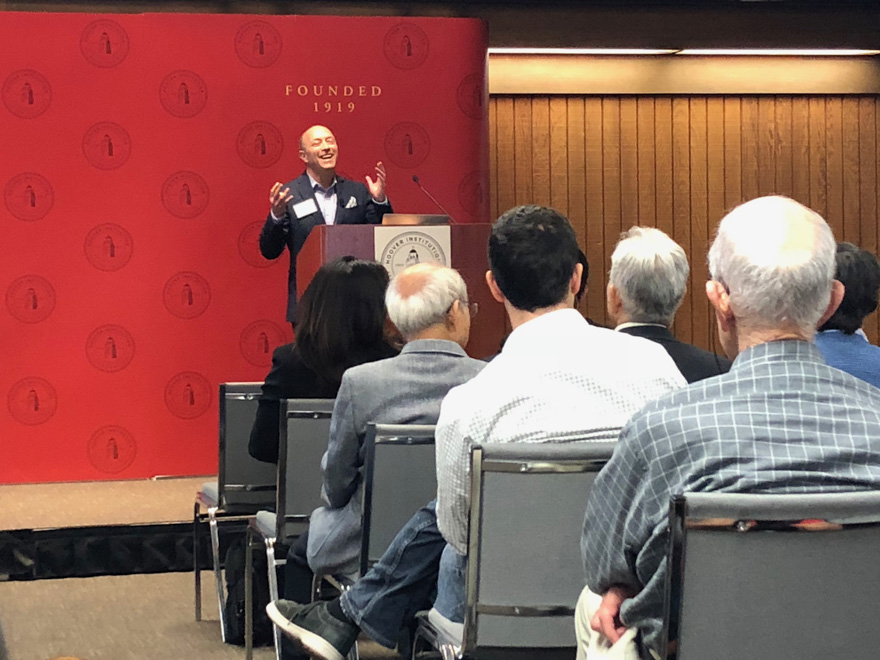On Thursday, Emory University history professor Mark Ravina ’88 Ph.D. ’91 gave a keynote lecture exploring the development of Japanese nationalism in a global context. He spoke at Stauffer Auditorium in honor of the 150th anniversary of the Meiji Restoration, the upcoming 100th anniversary of the Hoover Institution and the 50th anniversary of the Center for East Asian Studies (CEAS).
“This year is a special moment in which all three landmark anniversaries align,” said Tomochika Uyama, the Consulate-General of Japan in San Francisco. “It is a symbol of ongoing scholarly exchange between Japan, East Asia and the rest of the world, and this contributes to mutual understanding between our countries.”
The talk, hosted by the Hoover Institution Library and Archives and the CEAS, began with remarks by Uyama and Eric Wakin, the deputy director and Robert H. Malott director of the Library and Archives.
Ravina’s speech drew partly from his book “To Stand With the Nations of the World,” which explores the emergence of modern Japan. The Meiji Restoration began in 1868 after political revolution brought about the end of feudalism under the Tokugawa shogunate and restored power to the emperor.
According to Ravina, the collapse of the Qing, Ottoman and other major empires contributed to a world transition into a new arrangement of nation-states, each with its own linguistic, cultural and national identity. Ravina adopted a global perspective in tracing the history of Japan’s development into a nation-state, focusing on the paradox of nationalism, which calls for pride in the uniqueness of the nation-state despite all nation-states being what he calls “local instances of [the] same political form.”
To illustrate his point about nationalism and its development across the world, Ravina brought up the example of local currency. He traced Japan’s transition from locally-designed currency to currency designs depicting nationalistic images, noting the role of American printing companies in this change.
“What I want to look at is the idea of nationalism as a technology,” Ravina said. “There’s [printing companies] who have successfully done something for the American government, who’ve lost that business and find that there’s a market someplace else […] In the process they are [also] disseminating a way of depicting the nation.”
Ravina also proposed a new way of viewing the world, breaking from dichotomous analyses of tradition versus modernity to instead use a lens focused on nationalism and capitalism. According to Ravina, nationalism has been the cause of phenomena like the collapse and formation of empires, and capitalism has facilitated the spread of nationalism – just as American printing companies did in their search for new markets.
When asked why the study of the Meiji Restoration is significant, Ravina said he feels as if the 19th century is more relevant than the 20th century to global politics today.
“So much of the 20th century – particularly the rise of fascism and then the bipolar world, the Cold War, capitalism versus communism – that world is gone,” Ravina said. “What we’re living through now is something that feels much more like the late 1800s leading up to WWI […] So that, to me, makes what seems like a more distant past an incredibly relevant past.”
Contact Emily Wan at emilywan ‘at’ stanford.edu.
